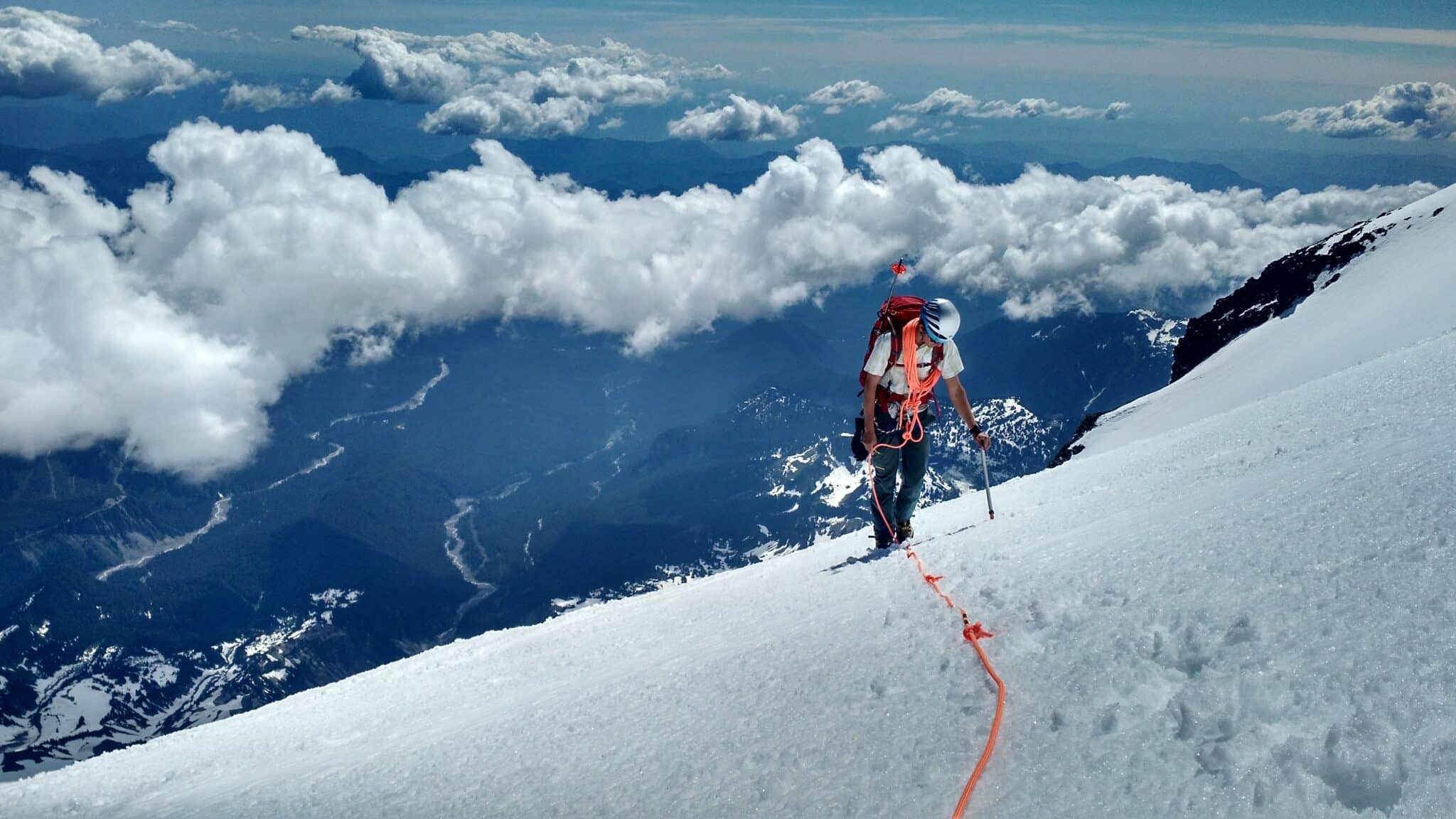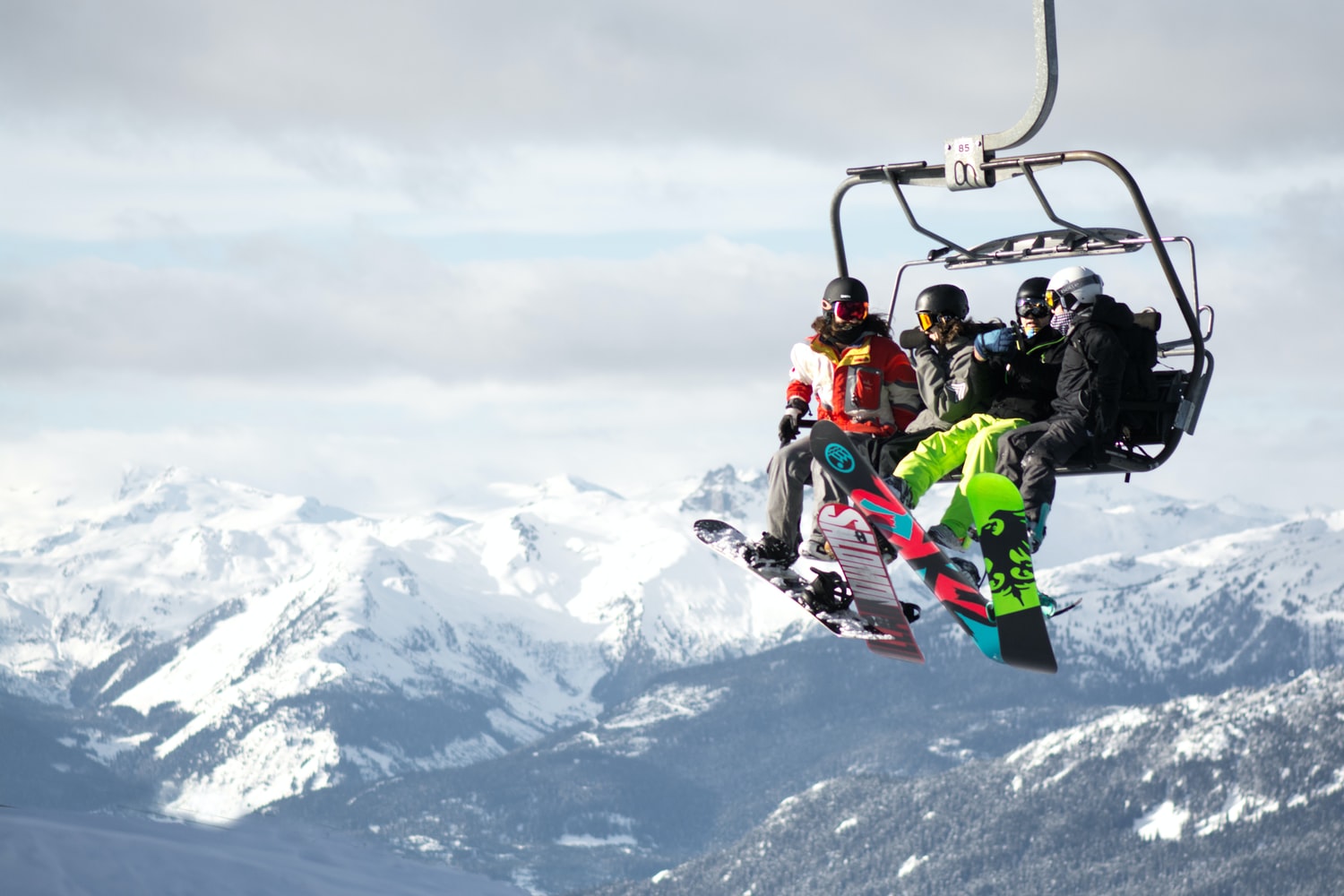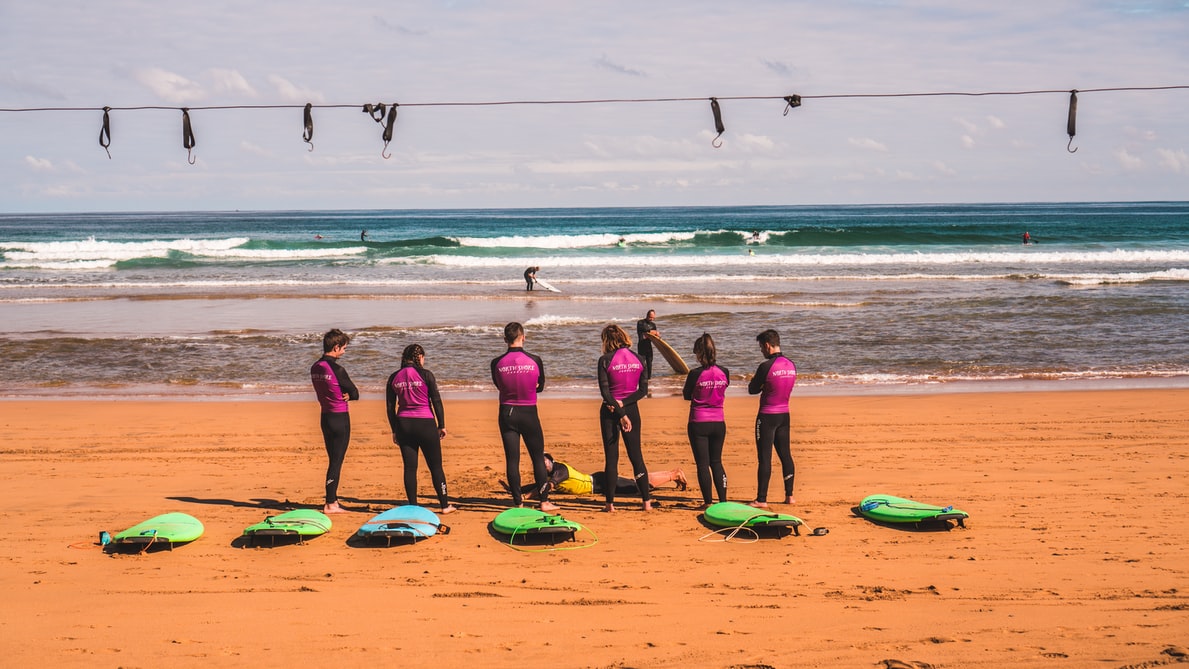Becoming a Climbing Guide sounds like the perfect job, right? Having the chance to climb routes all over the country, or heck, even all over the world? Waking up on the side of a mountain and peering out your portaledge to see the sunrise. Getting paid to do what you love.
It sounds amazing. And it is. But there’s a vast amount of work that goes into earning your certifications, making enough money to survive, finding enough work throughout the year, mitigating risks for yourself and for your clients, and creating a solid reputation as an expert Climbing Guide.
We sat down with Mac McCaleb, one of the hardest working people we know. He’s the owner and operator of Granite Mountain Guides, a rock climbing guide service that prides itself on serving the local outdoor community and anyone who wishes to experience it for themselves. They focus on quality instruction and experiences while providing a positive, risk-managed environment to learn.
Granite Mountain Guides also use Origin, an online booking and scheduling platform streamlining the administrative work that comes with operating a guiding business—everything from managing your guides’ schedules, post-trip reports, inventory, rentals, guests, and much more.
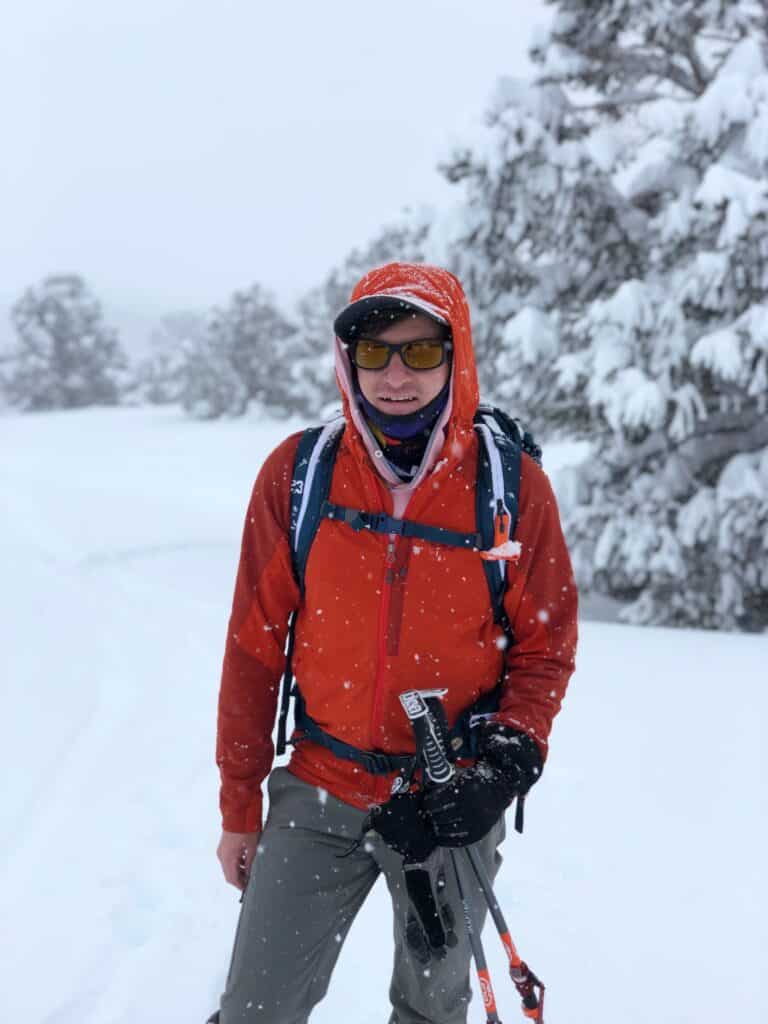
Why did you want to become a Rock Climbing Guide?
I started climbing in my early teen years in Phoenix. My friend’s parents would simply drop us off at the climbing gym in the summer a few times a month. It was one of the few activities we could do to stay active since it was (moderately) air-conditioned. We kept this up through the years and over time it became a dependable outlet for me and others. I recognized early on that I had a steep learning curve for climbing outdoors and had too many near-misses to count.
With this knowledge, I took to helping others learn the best practices over them putting their lives at risk. I found that I enjoyed it and was told that I was also good at it. That’s when I decided to step into the realm of outdoor education. Then became inclined to teach outdoor rock climbing and mountaineering.
As I was learning how to become a professional Climbing Guide and obtaining my certifications, accidents were still happening to newer climbers in my own backyard. This only solidified my stance that I wanted to provide more formal education to newer climbers and do what I can to prevent unnecessary climbing accidents.
How did you become a Climbing Guide and how is that different from a mountain guide?
The term “Mountain Guide” is actually an internationally-recognized term. It refers to someone who has completed their certification in the main disciplines of the mountains: Ski, Rock, & Alpine/Ice. In the United States we are much more relaxed about this terminology. In Europe, it is a big deal since you cannot legally operate without having this full Mountain Guide Certification.
Unfortunately, I am far from a Mountain Guide. I am currently an AMGA Apprentice Alpine Guide who has completed the Alpine Guide Course, and has also completed the Single-Pitch Instructor examination.
What kind of courses and certifications did you obtain?
The Courses that I have taken to get this foundational level of proficiency is quite a lot. In fact and in all honesty, I got burnt out after taking too many courses in such a short duration of time. I absolutely love the mountains. I love learning, but sometimes it is necessary to take a step back to get re-grounded. Here are the list of Courses that I have taken to become an Apprentice Alpine Guide & SPI:
- AMGA Single-Pitch Instructor Course
- AMGA Single-Pitch Instructor Assessment
- AMGA Alpine Skills Course
- AMGA Alpine Guide Course
- WMI Wilderness First Responder
- WMI Wilderness First Responder Recertification
- AIARE Rec Level 1 Avalanche Course
- AIARE Companion Rescue
This list also doesn’t include the courses that I took personally through my own climbing career, which don’t provide certifications, but were just to increase my personal knowledge. Which was a Lead Climbing Class provided by the Arizona Mountaineering Club and a Self-Rescue Clinic by Geir Hundal in Tucson.
Like what you’re reading? Sign up for our newsletter and receive product updates, blog posts, and more:
[hubspot type=form portal=20710242 id=18ac1a5f-a560-4d2e-a134-9654342f7b61]
Did you do an apprenticeship with another guide?
Unfortunately, I have never really had a mentor for Guiding Professionally, which has made the journey exceptionally tough. The reality of the situation is that the Guiding Profession in Arizona is very much still the “Wild West.” Only recently have we, in the last several years, had legitimate-professional Guides come into the area.
This is crazy to me. It’s why I went out on a limb seeking the professional path alone and created Granite Mountain Guides: to provide quality education by professional guides who have been vetted through an internationally-recognized and accredited 3rd-party (the American Mountain Guides Association). I feel like the recreational climber deserves so much better than to be shown antiquated methods from someone who may not even have the capacity to manage the risks themselves.
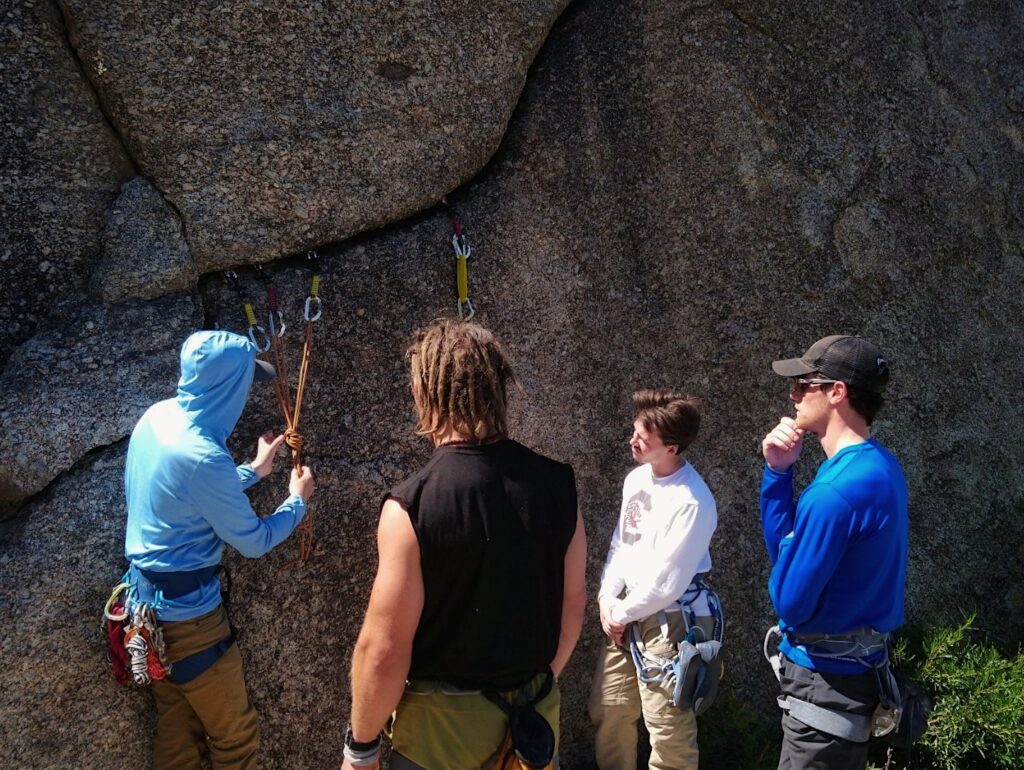
What kind of job opportunities are out there for a Mountain or Climbing Guide?
For a fully-certified Mountain Guide there are an incredible number of different job opportunities, because you are effectively a Subject Matter Expert in your field, which happens to be the mountains. These opportunities can include being a risk management expert for film crews and athletes in remote mountain ranges, working avalanche mitigation with Ski Patrol, or of course operating guided trips for clients off all levels on rock, snow, or ice in glaciated or non-glaciated terrain. Fully-certified Mountain Guides are also able to operate internationally, when certified through a member organization such as the American Mountain Guides Association.
Gaining experience to become a Climbing Guide is all about spending time in the terrain that you will be guiding in. Many aspiring Climbing Guides take a base-level of coursework, such as a Wilderness First Responder Certification and then an AMGA Rock Guide Course after they have met the minimum qualifications to take that course. They can then work for a guiding company within their Scope Of Practice and receive appropriate mentorship in the discipline of their base-level course (Rock, Ski, or Alpine).
How can aspiring guides gain experience?
A great way for aspiring Climbing Guides to gain experience prior to taking any AMGA Courses is to also supplement their learning from mentors/climbing partners with professional instruction by taking courses or guided trips offered by other guide services. It is surprising how often I hear individuals wanting to become a Guide themselves, but have never taken any formal instruction or been on a guided trip before.
I compare that to someone wanting to be a teacher, but having never been in a classroom as a student. I believe one of the main factors that prohibit this are the costs associated with it, which is understandable. This is also why Granite Mountain Guides created a Shadow Guide program, where an aspiring Guide can participate in our courses for a large discount; effectively a pro-deal.
How and why did you start your own guiding company?
The “How” part of that question is a lengthy one. But in summary I gained a lot of experience in creating a business when I was handed the Prescott Climbers Coalition (PCC) and told to “run with it.” I was able to learn the process of creating a company, and turning it into a 501(c)3 organization. The PCC is still an official Local Climbing Organization in Prescott to this day. I took those lessons learned into the creation of a grassroots guiding-service, which was just myself for many years. Until recently, when I have been able to adequately fund the full start-up of Granite Mountain Guides and obtain the permits in the local areas. One of which took several years.
I started Granite Mountain Guides to provide the climbers in Arizona a high-quality formal education if they are looking for it to supplement their personal learning process with mentors. Additionally, the climbing areas in Arizona are growing in popularity. There are several under-qualified guide services that are catering to the tourism industry in the area and exhibiting risky behaviors with their guests. I hope to mitigate the chances that a visitor to Arizona becomes a victim to an unqualified Guide.
What’s the process of getting permits?
This is such a rabbit-hole! Nearly all of the value in a Guiding Company is where it operates and how many permits it has. It can be so difficult to obtain permits that some companies choose to not follow Federal Regulations and operate illegally on whatever land they choose to. This is often called “Guerilla Guiding” and puts the entire industry at-risk. This is more prevalent in guides that have not received professional training.
Unfortunately, this is something that the general public is often unaware of and land managers do not always have enough resources to tend to. Many companies can get away with it. The pricing for these companies is also more-favorable for the guests, over professional guide services, since they are not paying for permits, insurance, and certifications – which hurts the professional guides in the industry. Fortunately, the American Mountain Guides Association is making steps forward in establishing more professional, well-qualified guides in the workforce and this is very slowly becoming less of an issue.
An Outline of the Process
The general process of obtaining permits is first identifying where you want to operate, then determining who owns or manages that land. It is becoming more common-place knowledge that “public lands” in the United States is extremely complex. In general you have Private, City, County, State, & Federal Lands. Federal Lands can be National Forest, Wilderness Areas, National Parks, and BLM.
It would be great to say that each type of land has their own process for applying to permits, unfortunately this is not the case and each specific land often has their own process for permit applications. It can often take months to years to obtain a permit for a given area if they are accepting applications.
Additionally, in Arizona, we have several National Forests that have not accepted Commercial Use permit applications for nearly a decade, and do not anticipate opening it up again for a few more years.

How competitive is it to get hired by a guiding company?
I believe that if someone has a strong background in the terrain that they operate in and has taken a base-level course, then they can easily get hired by a guiding company. The caveat with that is at what level they get hired at and where they are willing/able to operate.
I highly encourage aspiring Mountain Guides to also branch out into other disciplines such as Guided Backpacking, Mountain Biking, and Whitewater Rafting if they have those skills as well. This can help create a more well-rounded Guide that can operate year-round and also in a wider selection of regions. Additionally, this can help prevent burnout as well.
What’s your favorite part of being a Climbing Guide?
As a Guide
One of the best parts of the job, as a Guide, is working with the guests and it is one of the main reasons to become a Guide in the first place – it’s all about the people! Hearing their stories and watching them grow and overcome challenges through shared experiences outside is a truly unique opportunity!
Guides often talk about the technical skills, the “hard skills” that are required to safely work in the field. This focus is only because we want to have all of that so dialed in, we can then focus on the clients and our “soft skills.” Every person is different. We need to be present and engaged with our guests to ensure that they have the best experience possible.
For instance, perceived risk and associated risk tolerance is one that often comes up. It’s one of my favorite aspects to talk about with guests. It helps me get to know them and how their brain is wired almost immediately. Then I can adjust the day or increase client-security to mitigate perceived risks as necessary so that they can accomplish their goals. I love the mantra “You can do hard things!” and use it often in this context.
As a Guide Service Owner
One of the best parts, as a Guide Service Owner, is the problem-solving that is required to achieve short-term and long-term solutions. It can be a bit of a Chess game. Especially since we are technically a newer-entry to the market and shaking things up.
So it is a dynamic environment. We need to constantly gather our data and analyze it to make sure the business is on the right track. Since we are in the business of providing services to people, it is even more interesting to attempt to learn the demand of the people and meet that demand where it is.
At the same time, generate new demand for well-qualified Guides, who provide top-tier experiences in Arizona. It’s a good challenge that keeps us on our toes, but so far we have been successful!
What’s your least favorite?
As a Guide
As a Guide, my least favorite part of the job is the toll it takes on your body and mind. At least for me, as naturally I haven’t always been the most athletic individual. For a bit of context, it is easier for me to do long-days (14+ hours) over easy-moderate terrain (low 5th-class) than it is for me to climb V5. It’s just the way my body was built.
Additionally, I am naturally a more introverted person. So while I love learning about people and helping them grow by teaching them new things or sharing experiences, this can also take a toll on me as well and takes me some time to recover from.
As a Guide Service Owner
As a Guide Service Owner, my least favorite part of the job is when there’s a lull in bookings or I see other Guide Services doing well when I am not. It’s not even about the lost revenue for the company, but about the lost wages for the Guides that work for GMG and not being able to fully control that aspect.
I look forward to the day where we are well-positioned in the Arizona market to be able to have a steady booking-rate through all seasons (Yes! You can climb in Arizona in the summer!) and employ Guides full-time with full salary and benefits.
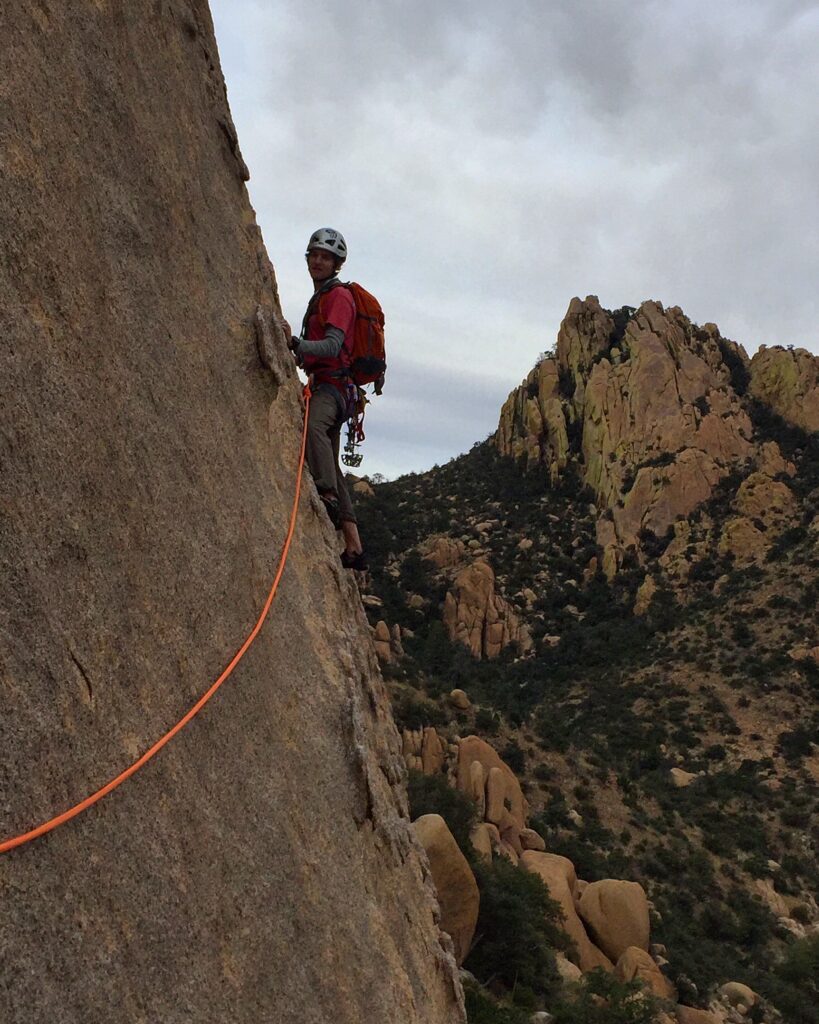
What are some hard truths about guiding?
There’s an old saying I heard when I first started to venture into the world of outdoor education, and is repeated often to this day: “What’s the difference between a large pizza and a Guide? A large pizza can feed a family of four.”
There are so many aspects of that joke that can be broken apart into hard truths, here are a few of them:
- Guiding is often a high-risk, low-paying job. It can be very difficult these days to even find affordable housing in, or near the areas that we work. Additionally, there are currently few Guide Services that can afford to hire a Guide on salary, which reduces the stability of the position.
- Guiding is often chasing the seasons, which can mean a more-transient lifestyle, this also means that it can be difficult to become an established member in a community and form meaningful relationships with others.
The last hard truth that many aspiring guides may not want to hear is that if you want to get into guiding because you like climbing, skiing, or mountaineering and want to get paid to do it – this is not for you. It really is about the process of working with people, and very much not about you or your desires.
If you want to find a job that just pays you to be outside so that you do not have to sit behind a desk, then there are plenty of other opportunities out there that may be a better fit; which will allow you to keep pursuing your outdoor sports recreationally.
What’s something about your job most people don’t realize?
Many people don’t know what they don’t know. This is certainly true for this profession, especially in the eyes of the general public. For being a Guide, I think many people don’t realize how many decisions we make in a given moment. We are constantly working on situational awareness and ensuring that each decision that we have made up to that point has been the right one, and don’t need to amend our current plan of action based on new inputs. This can be distracting (hence why our technical skills need to be dialed), but also very fun problem-solving at the same time and I enjoy bringing the clients into this internal conversation as well.
As for being an owner of a Guide Service, I don’t think many people know how little money you will make. At least in a region that isn’t known to have the best year-round climbing (Arizona). Many people see the price tag for our services and believe that we are making a lot. When in reality our margins are slimmer than that of the retail industry. We could easily take all of our hard-earned cash and put it into real-estate and retire early with a much lower risk profile.
Our costs for equipment, insurance, permits, education, etc. do add up. We really do this out of love for the environment and people and we are underpaid for the amount of risk we take on and mitigate for our guests as well as the toll it takes on our mind and body.
How do you see guiding evolving in the future?
I am honestly not entirely sure where I see guiding evolving in the future. There are many, many variables that are changing every year. Things that I consider, which weigh on my mind a lot are the environmental impacts of our industry and how we are effectively contributing towards an ever-changing mountainous environment.
The amount of travel that tourism, as a whole, promotes is not beneficial for our office space. This increases our objective hazards that we need to mitigate, and shortens our operating seasons.
A great example of this is in the Cascades over the last season, which was shortened due to a Heat Dome that covered the region and collapsed snow-bridges over crevasses, etc. Local tourism, or staycations, are something that we look to promote more of in our region and I hope that picks up more around the industry as a whole.
Additionally, I would like to think that more people will look to guide services to learn skills for the mountains, instead of taking to YouTube or random members of the climbing gym. This is something that I am optimistic about since rock climbing has been exploding from the climbing gyms, and our outdoor crags are seeing an incredible increase in users over the last decade – many of which have been able to receive formal mentorship or education. This means that there is a large knowledge gap that has taken place for local crag & Leave No Trace ethics.
Are you an inspiring guide who wants to learn the ropes of leading climbs? Reach out to Mac at Granite Mountain Guides to sign up for one of their courses.
If you’re a guiding service looking for a way to uncomplicate your admin work, schedule a time to speak with us or create an account today.

